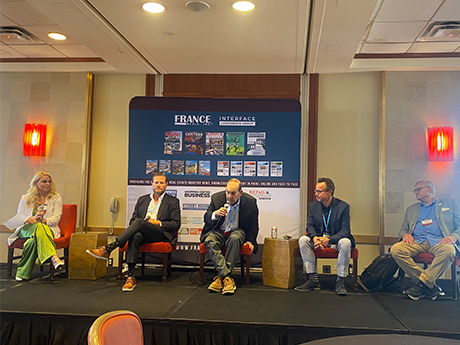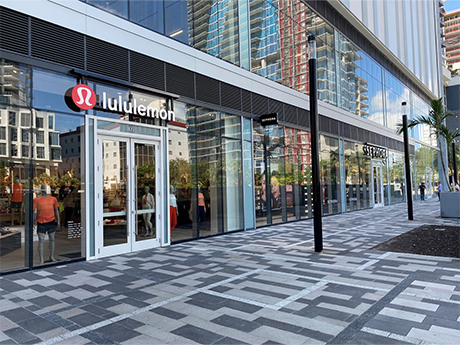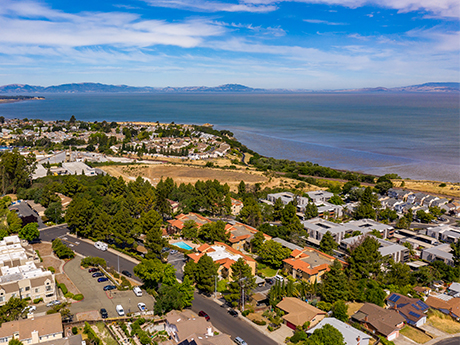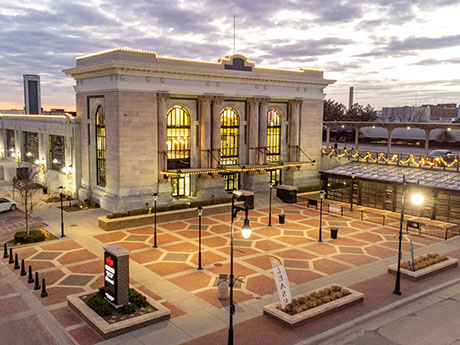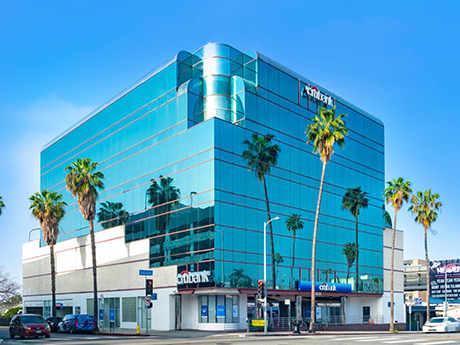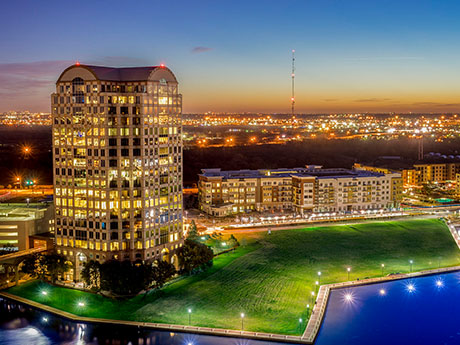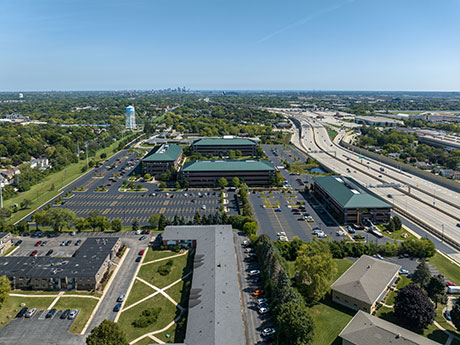— By Geoffrey West, Senior Vice President, Investment Property Sales and Acquisitions, MDL Group/CORFAC International — The Las Vegas retail market remains a tale of two cities with the tourism-driven Resort Corridor and surrounding MSA comprising two very different markets. In the past, the stories of the “cities” were somewhat divergent with robust development, premium rents, and top-tier restaurant, bar, entertainment and retail tenants dominating in the Resort Corridor. In contrast, the primarily suburban MSA experienced decreasing rental growth rates, metered new development and fewer exciting new tenants. However, looking at the past and current years, as well as into 2025, it appears the party isn’t just on the Las Vegas Strip anymore. Due in part to a statistical undersupply, the suburban Las Vegas retail market is poised to experience increasing rental growth rates over the next 12 to 18 months. The lack of new supply is expected to put continued upward pressure on retail leasing rates and downward pressure on vacancy rates, which are expected to be nearing record 2007 levels. Economic Summary The Las Vegas market saw the completion of more than $8 billion in development in 2023. Among these are the $3.9 billion, 3,644-room Fontainebleau Las Vegas, …
Market Reports
By Taylor Williams The multifamily markets of Austin and San Antonio — two of the fastest-growing cities in the country over the last decade — are on pace to deliver above-average volumes of new apartments in 2024, causing some industry experts to express concerns of potential oversupply. The origins of oversupply are not hard to trace, assuming the average apartment project in those markets takes about four years to complete from the time the site is identified and the entitlement and permitting processes begin to when the property is stabilized. Call it five years for some projects that experienced delays due to COVID-19. But in either case, the current wave of new product was largely financed at historically low interest rates at a time when healthy rent growth was easily underwritten. Demand was there, so developers supplied. And for similar reasons, the distress should be short-lived. With interest rates having risen by 400-plus basis points over the last two years and cuts for 2024 looking increasingly less likely, 2025 should be a year of very few new construction starts. Many owners that are delivering product this year will want to allow time for excess supply to be absorbed and see …
The retail sector in South Florida is undergoing adjustments that reflect the region’s dynamic economic landscape and evolving consumer preferences. One notable trend is evident in the restaurant sector, where owners increasingly aim to expand by opening new locations and entering lucrative markets. This trend is primarily driven by consumer spending, particularly the continual growth of Miami’s tourism industry. Visitors directly inject capital into the local economy, leading to increased disposable income that often circulates back through experiential commerce such as restaurant sales. A clear indicator of the local market’s strength is the ongoing rise in rental asking rates, significantly surpassing national averages. A robust 4.6 percent upturn in asking rent this year, as reported by CoStar Group, demonstrates retailers’ ability not just to survive but to thrive in a market with elevated asking prices compared to the rest of the state. This upward trend in rent is accompanied by a low 2.8 percent vacancy rate, according to CoStar data, indicating a competitive landscape where profitable lease opportunities are increasingly scarce for tenants. The retail sector within the restaurant industry continues to thrive, showing significant activity and heightened interest. The influx of high-net-worth individuals and a post-pandemic resurgence in immigration …
— By Anthony Pappageorge, Managing Director, NorthMarq — The Bay Area multifamily market is showing signs of stabilizing, although there are some persistent challenges present in the market that will impact operations. With 2024 likely to be a period of slower economic growth, there will be a continued emphasis on multifamily property operations. The challenges in the Bay Area rental market have shifted somewhat in recent years. In the period immediately following the pandemic, owners of rental properties were focused on maintaining occupancy levels and rent collections. In the current environment, added pressures surrounding rising property insurance costs and the prospect for additional rent control measures are increasing uncertainty to the Bay Area multifamily market. Occupancy: A Bit Lower than Usual, but Bouncing Back One multifamily property metric where the Bay Area routinely outperforms nearly every other part of the country is occupancy levels. Conditions remain tight at the beginning of 2024, with average occupancies ranging from about 96 percent in the South Bay and San Francisco, to about 94.5 percent in the East Bay. Current occupancies are about 50 basis points lower, on average, than in 2019. This is welcome news to operators who saw rates decline to about 90 …
By Bob Ale-Ebrahim, Occidental Management Wichita has seen significant growth in the commercial real estate market for two years in a row. There have been sizable investments in downtown, new industrial campuses, medical offices and higher education institutions. These projects are spurring strong momentum in downtown Wichita. Wichita is a thriving hub of social, professional and cultural experiences with 350 new residential units under development with over 120 unique retailers and 4.1 million square feet of occupied office space. Add in the solid job growth, and Wichita continues to show significant signs of a solid and expanding economy. Projects recently completed include the WSU Tech National Institute for Culinary & Hospitality Education (NICHE), The Hudson St. Francis (event space), The Arcade and the Chester I. Lewis Reflection Square Park. Projects under construction include Hi-Tone Lofts, Sutton Place student housing and the Broadway Plaza AC Marriott Hotel. Projects in the planning stage are street improvements at Commerce and St. Francis streets, the Wichita Biomedical Campus, Wichita Transit multimodal facility, ballpark/riverfront stadium development, Exploration Place amphitheater and destination playscape, Delano Riverfront Stadium project and the Kingdom Building. Wichita’s economic development generated more than $418 million in capital investment in 2023 alone. Remarks …
— By Taylor Stokes, Market Intelligence Analyst, Avison Young — The Los Angeles office market continues to struggle with a 24.7 percent vacancy rate at the end of the first quarter of 2024, according to Avison Young’s first-quarter Los Angeles office market report. Leasing activity picked up slightly in the first quarter of 2024 with 951 leases recorded. This equated to 3.5 million square feet, up 5.4 percent from the fourth quarter of 2023 when there were 902 leases signed. To put the decline of occupancy in perspective, the first quarter of 2022 ended with a 15.4 percent office vacancy rate, which was up from 15 percent at the end of 2021. It was also up from the previous high of 13.1 percent that was recorded in 2010. There were a couple lease transactions to highlight in the first quarter of 2024. Snap picked up 400,000 square feet in Santa Monica, while Bank of Tokyo Mitsubishi signed a nearly 62,000-square-foot lease in Downtown Los Angeles. Downtown continues to struggle with the highest vacancy in the market at 28.6 percent. The anticipated return to office hasn’t happened, as many users see the hybrid work schedule continuing for the long-term. They, therefore, …
By Brett Merz, senior vice president of asset management, KBS Texas was one of the first states to experience the return of employees to the office post-pandemic. That trend continues today. Even as work-from-home and hybrid work become further entrenched in some parts of the country, Texas still leads the nation in terms of employees coming into the office. According to Kastle’s Workplace Barometer, office properties in Dallas, Houston and Austin have occupancy rates during peak times that are 10 percent higher than the national average. Kastle’s data cuts across all building classes, but in our experience, mid-week occupancy at our Class A office properties in Texas is even stronger. Kastle’s data and our experience contrast with the negativity surrounding the office market and point to the potential for greater opportunity throughout 2024 and beyond. According to JLL’s local market office reports for major Texas cities, vacancy rate increases are slowing down. With new construction in Dallas and Austin trending down, as well as zero new construction in San Antonio and Houston, occupancy rates may begin to grow through the rest of the year. Additionally, rents for Class A buildings are either stable or have seen slight increases over the …
— By Kirsten Grado, Toss Vallentine and Wing Lee of JLL — The resilience of the South Bay/Silicon Valley economy has been tested with the dramatic change in hybrid work formats that enabled employees to work from anywhere. While office vacancy has hit near record levels over the past year, signs of strengthening fundamentals are pointing to a bottoming of the market and a period of opportunity for companies and investors with long-term views. So, what is marking the signs of optimism? Leasing activity has continued to improve as companies in technology, professional services, financial services/consulting and other sectors leased 865,000 square feet across 61 transactions in the first quarter of 2024. The largest leases were PwC agreeing to move from downtown San Jose into 141,000 square feet within the top three floors of One Santana West, as well as a confidential tech firm leasing 162,000 square feet at Coleman Highline, also in San Jose. Other notable leases were TDK InvenSense renewing its 82,000-square-foot space in San Jose, as well as KMPG and the 49ers organization each taking about 50,000 square feet of space in new leases in Santa Clara. Premier space remains in high demand as companies look to …
By Matt Hock, NAI Greywolf In the active landscape of Milwaukee’s commercial real estate market, several trends are reshaping the way businesses, both tenants and landlords, approach office spaces. From the enduring impact of remote work to the changing preferences of tenants, the market is currently witnessing a focus on quality, adaptability and talent retention. Flight to quality persists While the market continues to see the flight to quality we have experienced for the past few years, the Milwaukee office sector is now also experiencing what has been termed as “competing with the couch.” Companies are battling the challenge of bringing employees back to the office and with that they are looking to solve this issue with providing spaces that offer more than your standard office setup. Basically, they are looking for amenities and features within the office that entice workers to come back, compared with what remote workers have with their home office setup. So, competing with the comforts of home, or the couch, in these cases. This has catalyzed a “flight to quality,” where businesses are investing in premium office spaces designed to enhance the overall employee experience. In effort to attract and retain top talent, companies are …
— By Gary Baragona, Vice President of Research, Kidder Mathews — Home to an eclectic mix of local retailers, award-winning restaurants and the world’s most prestigious brands, Los Angeles has long been one of the most dynamic retail markets in the country. However, sector dynamics significantly shifted during the pandemic as retailers began to rely heavily on their online sales to stay in business and remain profitable. While consumer preferences further evolved in 2022 and 2023, there has been a noticeable slowdown in consumer spending, largely due to ongoing economic challenges, reduced buying power, decreased savings and increased credit card debt. On the surface, overall market fundamentals within the commercial real estate retail sector appear to be relatively stable. Some key indicators illustrate market resiliency, but other trends demonstrate the recent struggles felt by the retail sector and the challenges that may lie ahead. For example, total leasing activity across the Los Angeles region was down 15 percent in 2023 compared to the previous year, and down 25 percent compared to pre-COVID averages. The total vacancy rate across Los Angeles increased to 5.3 percent during the first quarter of 2024 and has consistently hovered between 5 percent and 5.3 percent …



